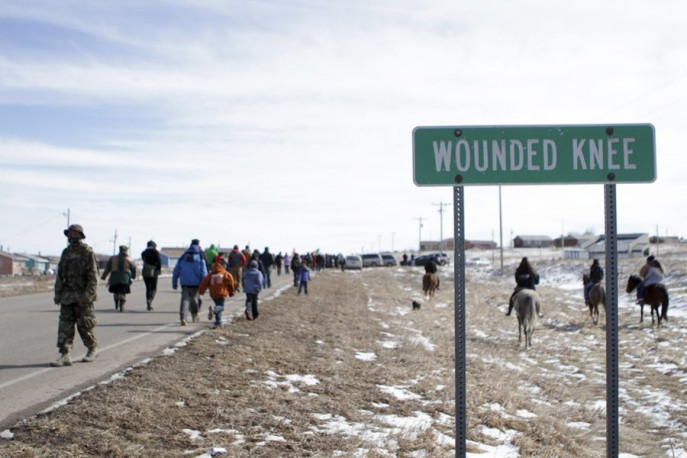
by: Ellen C. Caldwell
for JSTOR Daily
This December 29th marks the 126th anniversary of The Big Foot Massacre, also known as the Massacre at Wounded Knee or the Battle at Wounded Knee. In 1890, after 100 years of government policies and over 300 treaties stripping indigenous Americans of their land and rights, a violent and seemingly final standoff occurred between the United States Cavalry and the Lakota Sioux at Wounded Knee Creek in South Dakota. The cavalry came into the camp and began searching and seizing weapons. Though accounts diverge as to which side shot first, the U.S. Cavalry unleashed rapid fire into the camp, killing an estimated 150-300 Lakota Sioux, half of whom were women and children.
In recent days, comparisons have been made between the Massacre at Wounded Knee, the historic 1973 American Indian Movement and Lakota people’s sit-in at Wounded Knee, and thecurrent protests in Standing Rock, North Dakota. As the Standing Rock movement continues to grow, thousands have gathered not only to protest against the Dakota Access Pipeline (DAPL), but also to argue in favor of upholding both Dakota Sioux rights and human rights as called for by the United Nations Declaration on the Rights of Indigenous People. Twitter users as well as journalists have drawn parallels between the 1973 and present occupation.
Elizabeth Rich dissects AIM’s use of “Wounded Knee” as both a place and event—a site and metaphor. Her scholarship helps to explain the connections between the 1890 Wounded Knee Massacre, the 1973 protests, and the contemporary protests at Standing Rock…
